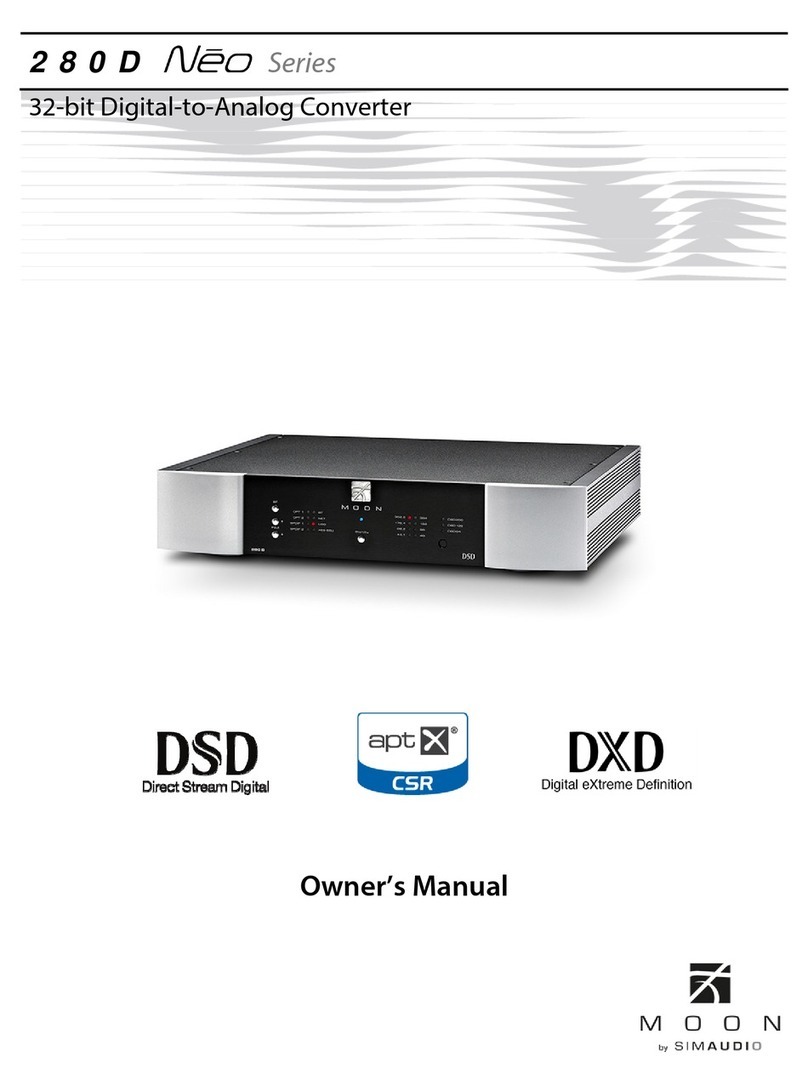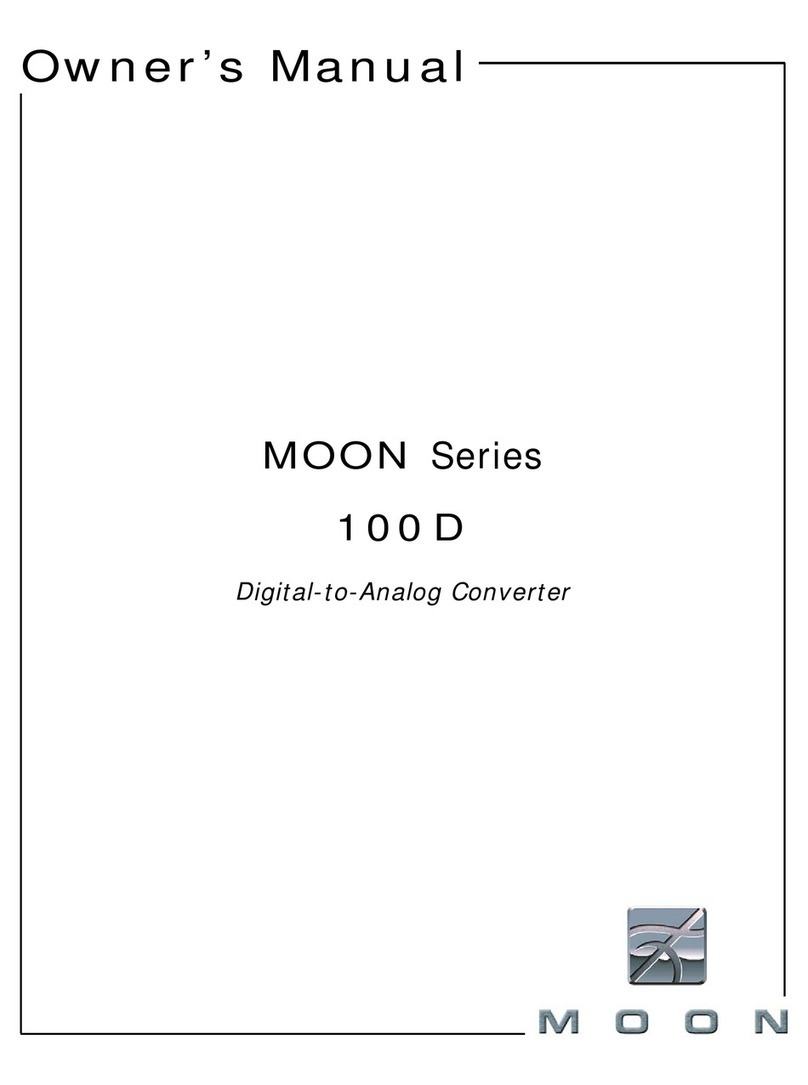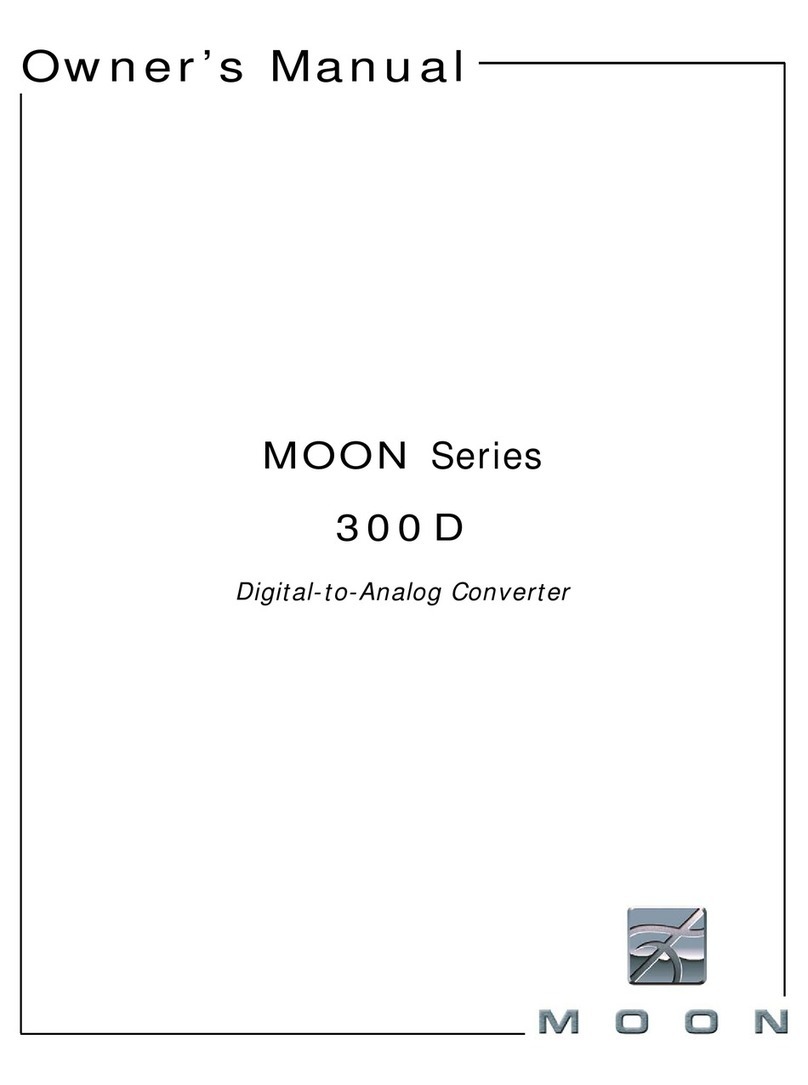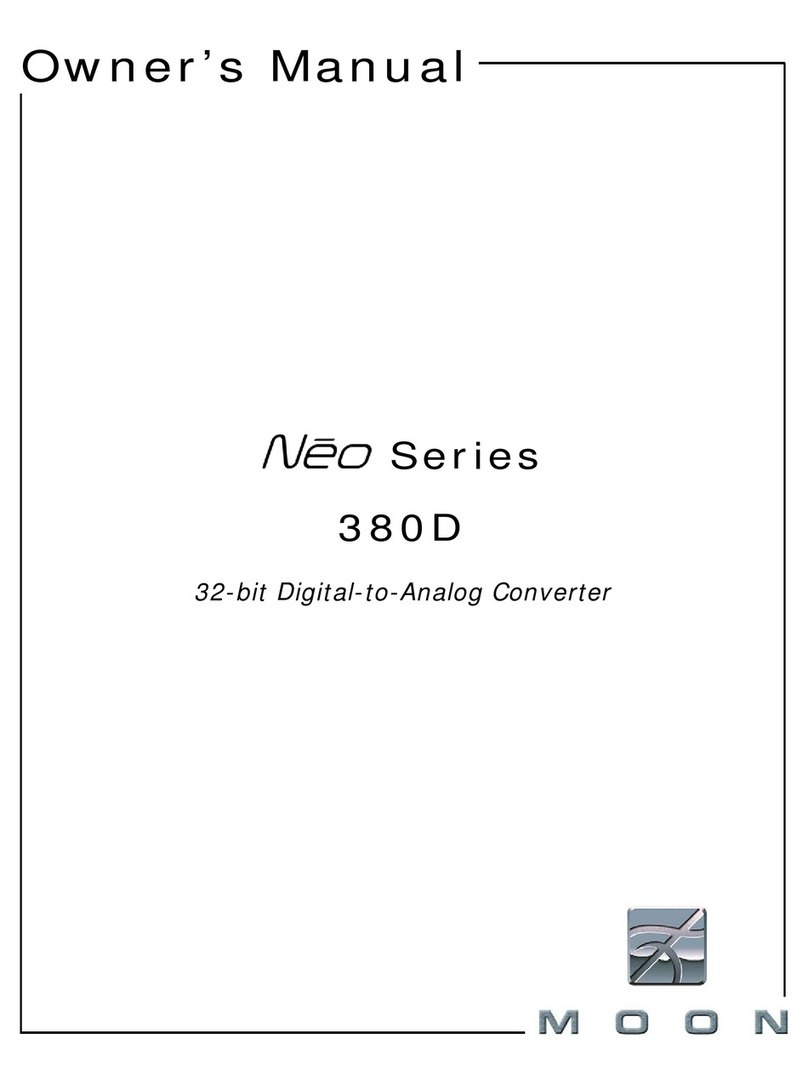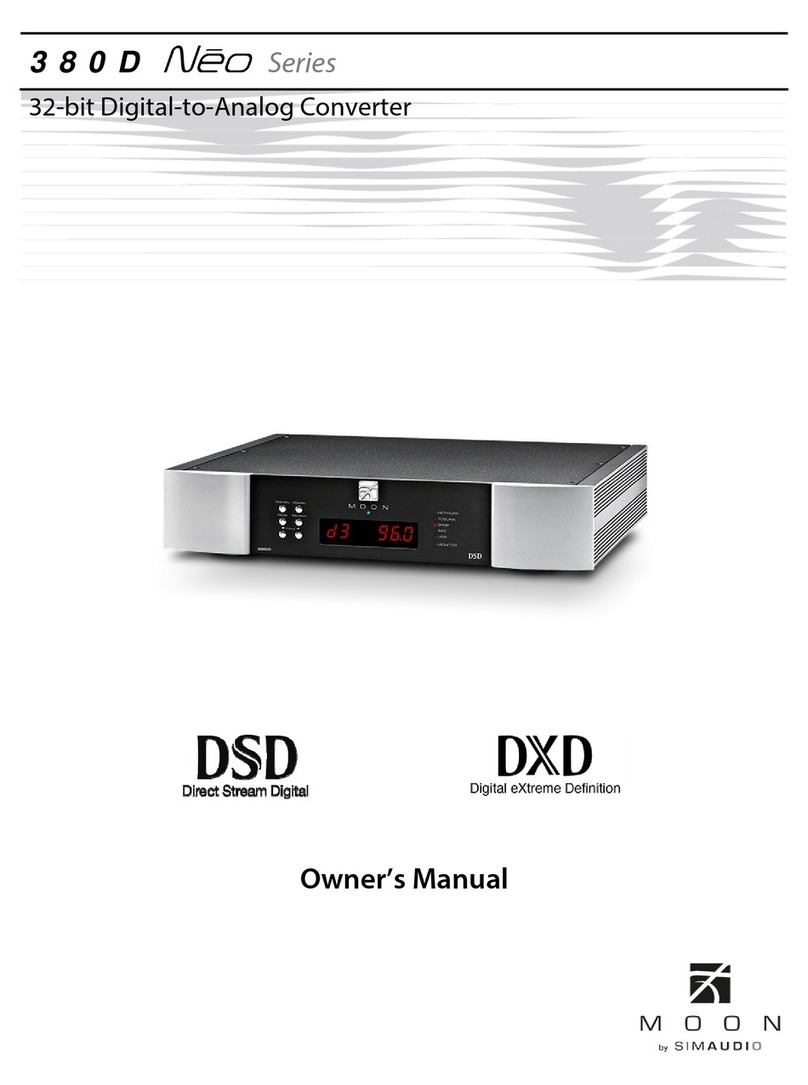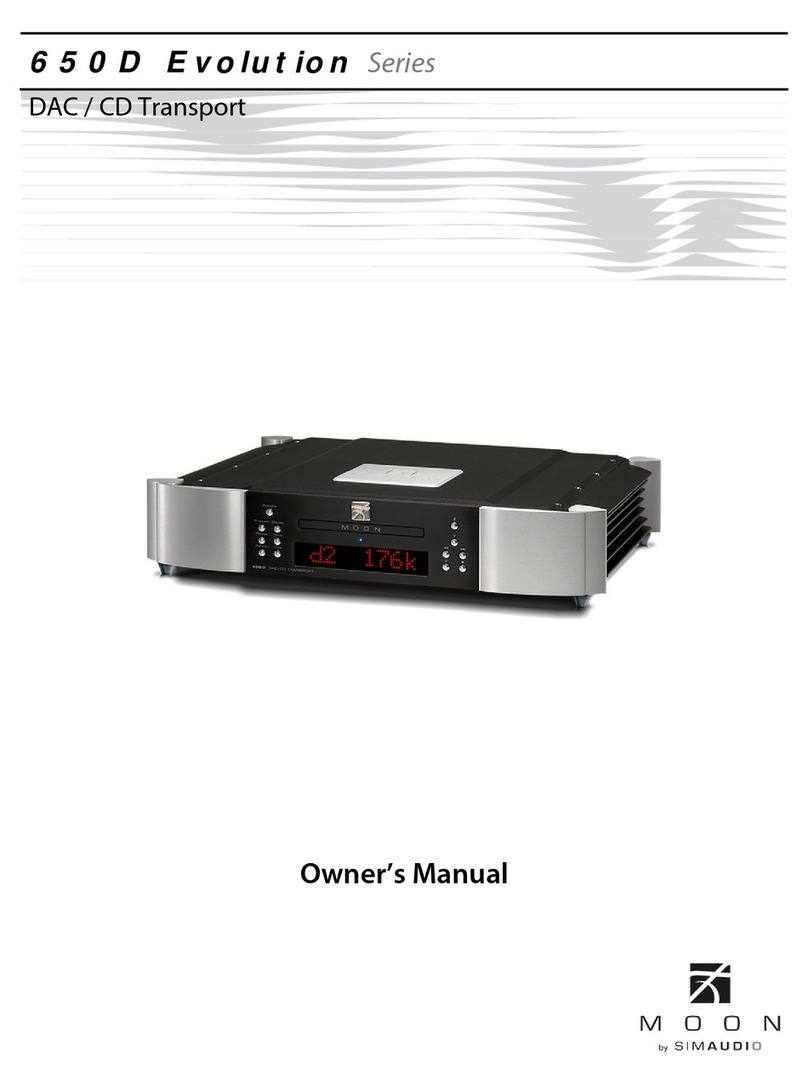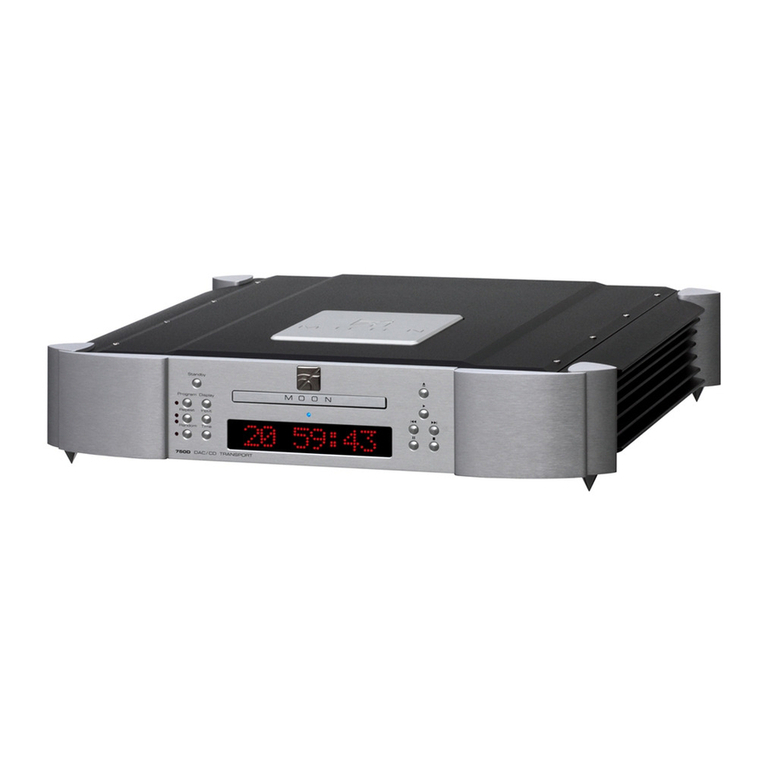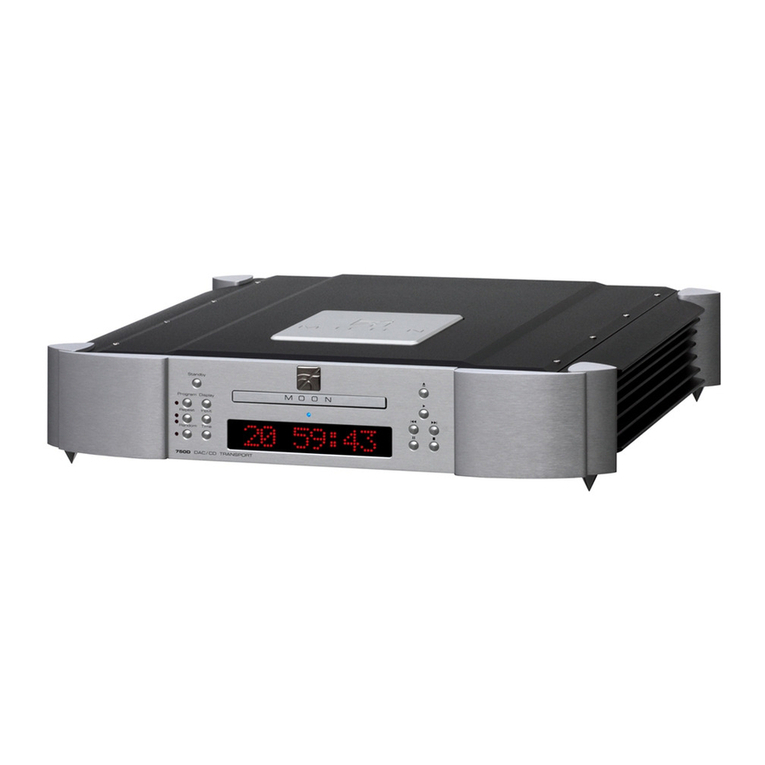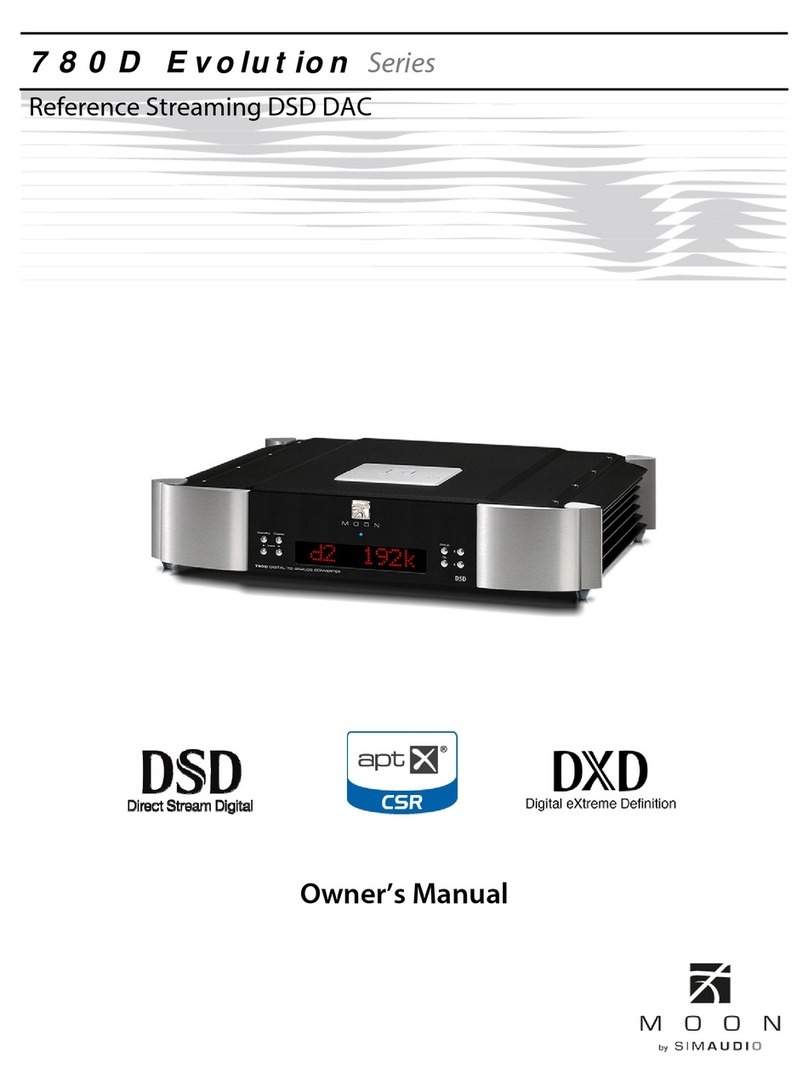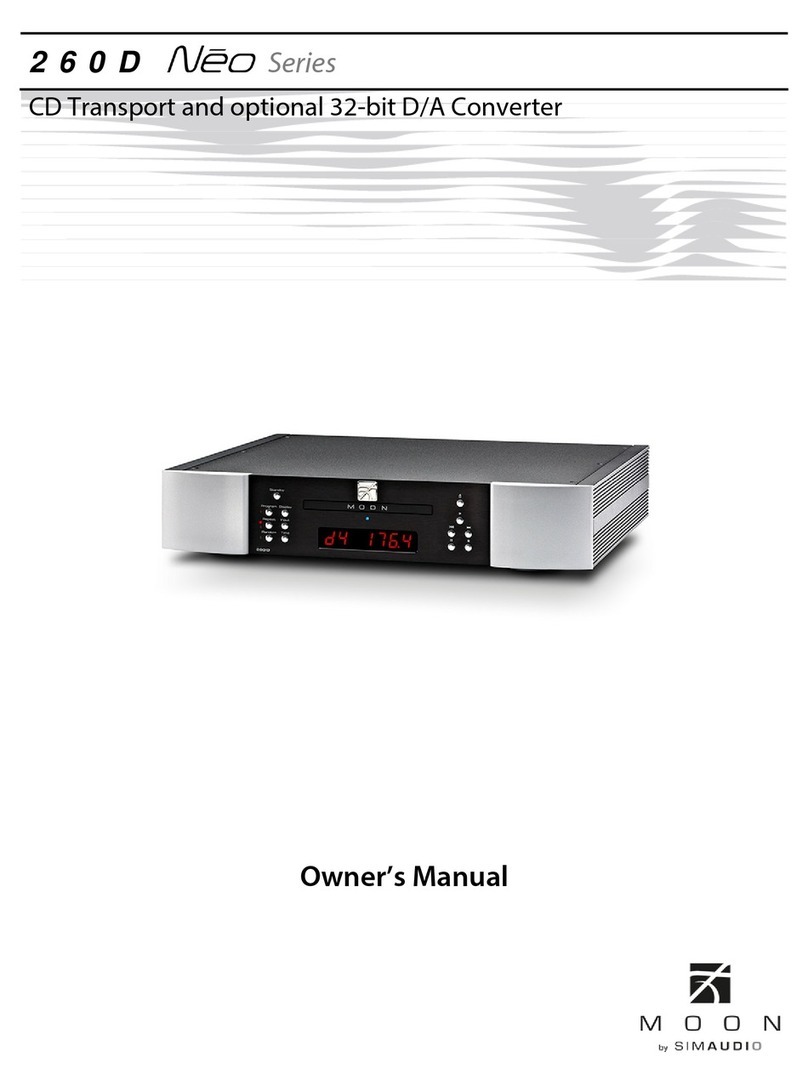
380D Digital-to-Analog Converter
____________________________________________________________________________________
9
SimLink™
The main feature of SimLink™ on the MOON 380D, involves the “Standby” function. By pressing down and holding the
“Standby” button for 2 seconds on the 380D, all other MOON components connected via the SimLink will go into “Standby”
mode along with the 380D. The same logic applies when switching from “Standby” to active mode. However, if your MOON
380D is equipped with both the “MiND” Music Streamer and the variable analog outputs, then the SimLink™ offers many
more features: Volume, Mute, Standby. Digital Input Selection all via the “MiND” app running on your Apple or Android device
The connection rules for the SimLink™ are very straightforward. You must always connect the supplied cable between one
component’s “SimLink™ Out” jack and another component’s “SimLink™ In” jack. If you inadvertently connect the cable
between either two “SimLink™ In” or two “SimLink™ Out” jacks, the SimLink™ communication feature will not function. Also,
there is no master component in a SimLink™ chain; no one particular component operates as the main communications
controller. If you are using your MOON 380D with an older MOON product such as a P-7, P-8 or i-7, you will need to update
the software of the older product to allow for complete SimLink™ functionality. Contact your retailer for further details.
Operating the 380D
We recommend leaving your MOON 380D powered up at all times to maintain optimal performance. When you plan on being
away for a few days, it may not be a bad idea to power off your DAC. Please keep in mind that once fully “broken-in”, your
380D requires several hours of operation before reaching optimal performance after powering it up again.
Turning on your MOON 380D for the first time
Prior to turning the DAC on for the first time, make sure that every cable is properly connected to avoid any problems. Flick
the main rocker switch, located on the rear panel, labeled “POWER” to the ‘1’ (on) position. Next, briefly press the push
button labeled “Standby” located on the front panel. You will hear a very faint click sound confirming that everything is in
order. The blue LED on the front panel will illuminate, indicating that the 380D is now powered up and ready for use.
On and Off Sequence
To avoid having any annoying noises (ie. “thumps” and “pops”) emanate from your speakers when powering your 380D on or
off, you should always power up your 380D before powering up your preamplifier, integrated amplifier or power amplifier. As
well, always power down your 380D after powering down your preamplifier, integrated amplifier or power amplifier
Balanced Operation
When using an unbalanced interconnect, the audio signal runs through both the center wire and the shield/ground wire. Any
noise picked up by this interconnect (ie. nearby magnetic fields such as an AC power cord) will be reproduced by both the
preamplifier and amplifier, then heard through the loudspeakers. Conversely, a balanced interconnect has three separate
conductors; one for the ground and two for the actual signal. These two signals are identical except that one is 180 degrees
out of phase with the other. For example, when one conductor is carrying a signal of +4 Volts, the other will be carrying a
signal of –4 Volts. When these two inverted signals on a balanced line are output from the MOON 380D, any noise picked
up by the interconnect will be eliminated since a differential circuit amplifies only the difference between these two signals:
Noise on a balanced interconnect will be equal on both conductors and therefore cancel out.
